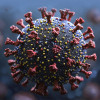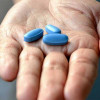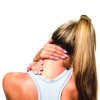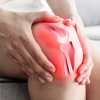
 Mrs. Mayuri Mathur
Mrs. Mayuri Mathur
Parkinson's Disease: A Common Brain Disorder
Parkinson's disease is a progressive neurological disorder characterized by problems with movement as the first signs. It is thought to be caused by the death of the cells of the substantia nigra, a part of the brain that produces dopamine, which is responsible for smooth and coordinated bodily muscle movements. When these cells die, dopamine levels drop by 60 to 80%, resulting in the symptoms of Parkinson's. Scientists have also discovered that many brain cells of people with Parkinson's contain Lewy bodies, uncommon clusters of the protein alpha-synuclein. Further research is being conducted to better understand the role of these Lewy bodies in developing Parkinson's disease.
Causes and Risk Factors
The exact cause of Parkinson's remains unknown. However, it is thought that the genetic and environmental components may have a role. Some scientists also believe in the role of viruses in triggering Parkinson's.
Despite the unclear reason for its occurrence, researchers have identified its risk factors-
• Gender. Men are one and a half times more prone to develop Parkinson's than women.
• Race. Parkinson's may occur more in white people compared with Black or Asian people. Geographic location may be the reason for a higher risk.
• Age. Ages between 50 and 60 years witness most cases of Parkinson's
• Family history. It augments the likelihood of developing Parkinson's disease.
• Toxins. Exposure to particular toxins may raise the risk of Parkinson's disease.
• Head injury. Increases the risk of developing Parkinson's disease.
Sign and Symptoms of Parkinson's Disease
Few early symptoms of Parkinson's can appear several years before the development of motor problems, such as-
• diminished ability to smell (anosmia)
• small, cramped handwriting
• voice alterations
• stooped posture
The early signs of Parkinson's disease may often go unrecognized. The body may try to alert about the movement disorder many years before the onset of the actual problem with these warning signs.
Individuals with Parkinson's show four major motor problems:
• tremor (shaking that occurs at rest)
• sluggish movements
• stiffness of arms, legs, and trunk
• balancing problems and tendency to fall
These people may also have secondary symptoms like:
• blank facial expression
• getting stuck while walking
• muffled, low-volume speech
• diminished blinking and swallowing
• proneness to fall backward
• less arm swinging when walking
• Parkinsonian gait, or shuffling steps while walking
Other associated symptoms of Parkinson's disease are-
• flaky white or yellow scales on oily regions of the skin, called seborrheic dermatitis
• augmented risk of skin cancer (melanoma)
• sleep disruptions with vivid dreams, talking, and movement during sleep
• anxiety
• hallucinations
• psychosis
• attention and memory problems
• hardship with visual-spatial relationships
Disease Progression and Associated Complications
Parkinson's is a progressive disease, causing symptoms to worsen typically over time. Doctors often use the Hoehn and Yahr scale to classify it into five stages, which are as follows-
Stage 1: Represents the mildest form, which may cause the symptoms to get unnoticeable or affect only one side of the body.
Stage 2: Is moderate, which may cause symptoms like muscle stiffness, tremors, facial expression changes, and trembling. Symptoms may involve both sides of the body and may be more noticeable. Muscle stiffness can complicate and prolongate daily tasks.
Stage 3: In this middle stage, the symptoms reach a turning point, maybe more noticeable, and interfere with daily tasks. At this stage, balance issues become more significant and falls more common. Most people may not require assistance at this stage.
Stage 4: Brings about significant changes, necessitating a walker or assistive device. It also markedly lowers reactions and muscle movements, making a living alone unsafe and possibly dangerous.
Stage 5: Marks the onset of confusion, delusions, and hallucinations. It is the most advanced stage, demanding around-the-clock assistance. It causes difficulty in standing or may require a wheelchair.
Parkinson's disease is not fatal; however, its complications can shorten the lifespan of the sufferers. Parkinson's increases a person's risk for potentially life-threatening complications, like encountering:
• falls
• blood clots
• lung infections or lungs blockages
Parkinson's dementia is also a complication of Parkinson's disease, causing people to struggle with reasoning, thinking, and problem-solving. It's very common, affecting nearly 50 to 80 percent of people with Parkinson's.
Diagnosis and Treatment
Despite its popularity, no characteristic tests can diagnose Parkinson's. Diagnosis relies on health history, a physical and neurological exam, along with evaluating the signs and symptoms. Sometimes, the doctor may prescribe imaging tests, like a CAT scan or MRI, to rule out other conditions. They may also advise a dopamine transporter (DAT) scan.
Many other diseases have similar features as Parkinson's but require different treatments, so getting an accurate diagnosis as soon as possible is important. Medication may be needed in nearly all cases to help manage the physical and mental health symptoms associated with the disease. Drugs help treat the symptoms of Parkinson's by:
• Improving the dopamine levels in the brain
• Affecting other brain chemicals, like neurotransmitters, which carry information between brain cells
• controlling non-movement symptoms
Parkinson's surgery is reserved for people resistant to medication, therapy, and lifestyle changes. Deep brain stimulation and Pump-delivered therapy are the two primary types of surgery used to treat Parkinson's.
Advanced treatments include MRI-guided focused ultrasound (MRgFUS), a minimally invasive treatment that may help manage tremors in people with Parkinson's.
Apart from the treatments above, researchers are also investigating other possible treatments for Parkinson's disease, like-
• Stem cell transplants.
• Neuron-repair treatments.
• Gene therapies and gene-targeted treatments.
Management and Prevention
Parkinson's is managed by combining-
• lifestyle changes
• medications
• therapies
Adequate rest, exercise, and a balanced diet are crucial in its management. Speech, occupational, and physical therapy can also help improve communication and self-care.
There are no proven ways to prevent the disease as its cause remains unknown. Recent research has suggested the protective effects of lifestyle factors like physical exercise and a diet of antioxidants in Parkinson's prevention.
The bottom line
Parkinson's is a common brain disorder mainly affecting people after the age of 50. Its early symptoms may often get unrecognized, causing a delay in diagnosis. Getting prompt treatment helps persons with Parkinson's boost their quality of life and escape its complications.

Mrs. Mayuri Mathur
Mrs. Mayuri Mathur is a Senior Medical Writer (Patient education and digital) and seasoned content creator with a rich tapestry of expertise spanning over ten years. With a diverse background in content creation, she brings a wealth of experience to the table, from crafting insightful medical articles to developing comprehensive patient education materials, dynamic press releases, and captivating brochures and website content. Throughout her illustrious career, she has demonstrated an exceptional knack for distilling complex medical concepts into easily understandable content, making her a trusted resource for both professionals and lay audiences alike. Her meticulous attention to detail and innate creativity have enabled her to deliver content that not only informs but also engages and inspires. Whether elucidating intricate medical procedures or crafting compelling marketing materials, her versatility and dedication shine through in every project she undertakes. Her passion for writing, coupled with her profound understanding, makes her an invaluable asset to any team or project. In a constantly evolving digital landscape, where effective communication is paramount, Mrs. Mayuri Mathur stands out as a beacon of excellence, consistently delivering top-notch content that resonates with audiences across diverse platforms.

.png)

.png)
.png)









.jp.jpg)



Please login to comment on this article